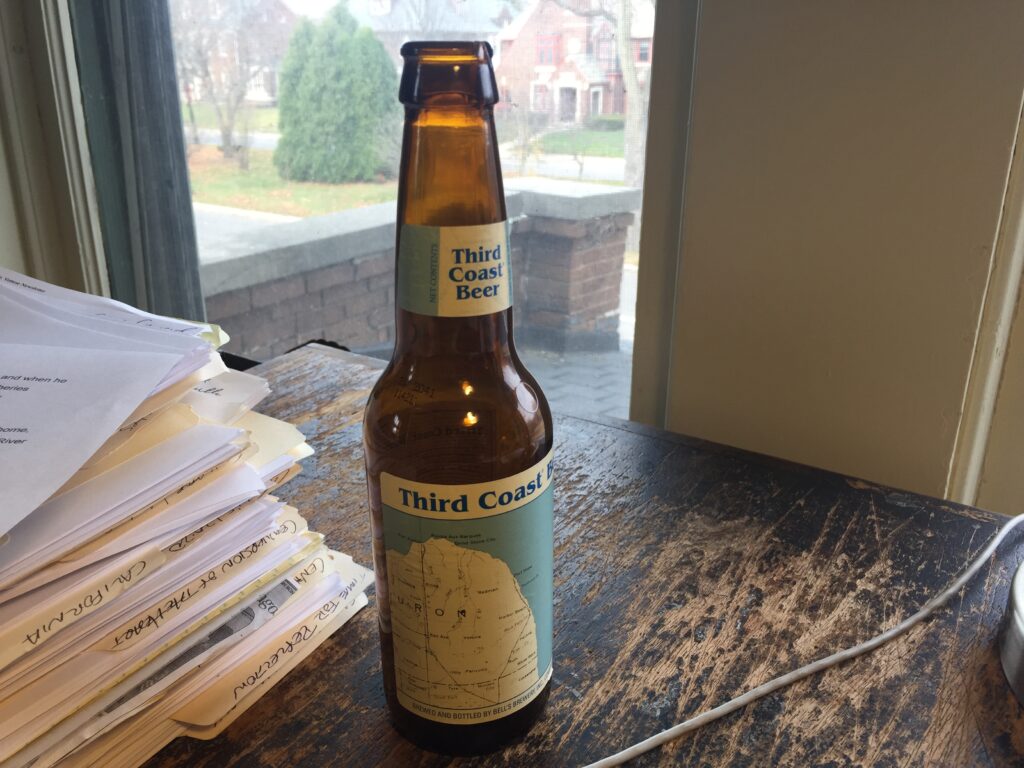Bell’s “Two-Hearted Ale,” named after the river in Michigan’s Upper Peninsula that inspired Ernest Hemingway’s tale, is the finest craft beer in America. Bell’s “Third Coast Beer,” brewed in Kalamazoo, Michigan, is second best, in my book. But more appropriate for this blog, drinking the beer for the first time several years ago got me thinking about the coastal outline on the label. Yes, I thought, this is an edge of America. And enough people in the creative and scientific communities identify it as the Third Coast. It wouldn’t appear on the label of a beer if it wasn’t, would it?
Recently, several readers of this blog expressed amazement that I would refer to the Great Lakes region as the nation’s third coast. Their perspective being the “Gulf Coast,” a rich cultural coastal region, to be sure. But it’s not the “Third Coast.”
As I note in the “About” statement of this blog, I arrived at the title through an absence of scholarly research. However, there’s plenty to support the assertion. Consider the National Oceanic and Atmospheric Administration’s statistics: “The Great Lakes hold monumental environmental, cultural, and economic value for both the region and the nation. Nicknamed the ‘Third Coast,’ the five Great Lakes possess 95 percent of the country’s surface fresh water supply… From their westernmost tip (Duluth, Minnesota) to easternmost point (Watertown, New York), the Great Lakes stretch about one thousand miles across the United States and Canada.The shoreline totals 9,000 miles—longer than the U.S. East and Gulf coasts combined. In combination, the Great Lakes have a surface area of 94,000 square miles (244,000 square kilometers). Their water volume, 6 quadrillion gallons (22.7 quadrillion liters), is enough to submerge the continental United States in nearly 10 feet of water. This gives the Great Lakes the distinction of being the earth’s largest single supply of surface fresh water.The Great Lakes also constitute the largest freshwater ecosystem in the world. The basin is home to 3,500 species of plants and animals, including Canada Lynx, Gray Wolves, and Bald Eagles, and over 170 species of fish. These flora and fauna not only contribute to the environmental integrity, resilience, and character of the region; they also support impressive Great Lakes tourism and recreation industries.”
There’s also the economic perspective. This from John Austin, director of the Michigan Economic Center and Nonresident Senior Fellow with the Brookings Institution, in 2018: “There is a third U.S. coast, a ‘freshwater coast’ along the more than 10,000 miles of Great Lakes shoreline — more than one-third of it is Michigan — that is an increasingly important fulcrum for economic renewal in the formerly industrialized communities. Continued federal efforts are especially critical for securing the future of many smaller communities that line that coast.”
And there’s the competition between several of the port cities along the Third Coast over who’s best. Adam Schlicht, Port Milwaukee’s executive director, in 2019, proclaimed the Port of Milwaukee as the premier port in America’s “freshwater coast.”
I prefer to think of it as “Third Coast.” And I’ll drink to that.

Merely wanna comment that you have a very decent web site, I enjoy the style it actually stands out. Anne Lowell Anya
Anne,
Glad the content and style work.
Dennis